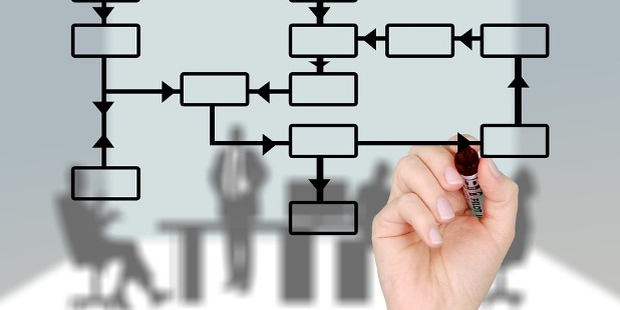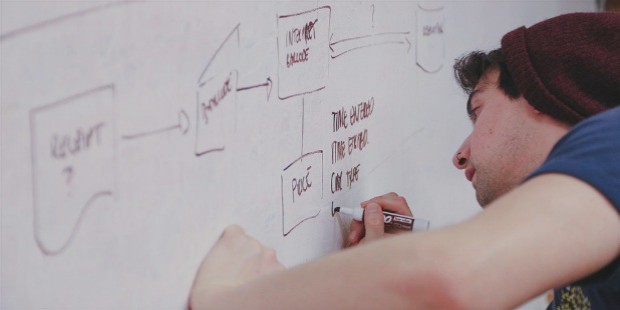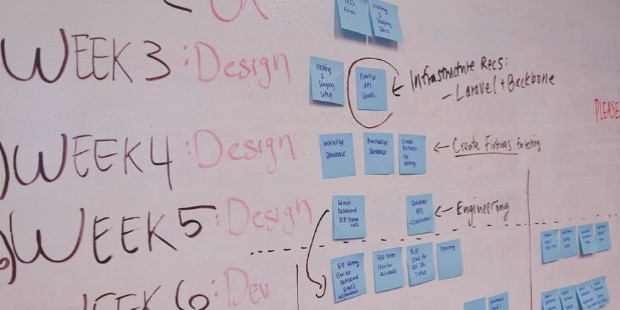Mind Mapping

What is Mind Mapping?
Mind mapping is an artistic way of presenting ideas through visuals to enable comprehension, analysis, and increase recalling of information. It is a replication of how the brain works. The focus is making and taking notes in a creative way.

Mind mapping is a user-friendly way of conceptualizing ideas compared to the theory form, which involves scheming through tons of notes. The beauty of mind mapping is in the breaking of information into a structured way using words, images, symbols, and colors.
It is an organized way of presenting ideas for quick interpretation and understanding. The map begins with a central idea that is divided into topics and sub topics. This structuring simplifies the message to suit the brain’s handling capacity.
Benefits and Uses of Mind Mapping

Mind mapping is used in learning institutions, government offices, and industries to analyze information. Information is clearly stated using key words to make decision making easy. Businesses and big organizations for instance, can benefit a lot from embracing mind mapping. Not to mention that mind mapping is an environment control measure, because it reduces tons of paper used to print huge documents.
1. Managing Time
It is easy to identify information on mind maps. This saves time of going through a bunch of information to get a single point across. A mind map explains many concepts in the shortest time possible.
2. Makes Presentations Easy
Many people tend to dislike presentations because of their boring nature of theory presented on slides. Mind maps make presentations great and fun, which avoids boring your audience. They give a presenter confidence because of the ease of pointing out information and ideas.
3. Brainstorming Ideas
In a group, there are people who are good at shooting great ideas, whereas other people’s ideas are passed over without any consideration. Mind mapping ensures that all suggested ideas are analyzed into consideration.
4. Project Management
Mind maps have the ability to map a whole project on paper for analysis. Management of a project always involves monitoring and evaluating the progress of a project. Mind mapping makes progress easy by simply keying relevant information to relevant branches. It makes it easier to refer to previous information.
5. Improves Leadership
One of the qualities of a great leader is being confident organized. Mind mapping influences the reflection of all these traits of a great letter. With all the details clearly mapped on the paper, you send the message of an orderly and effective communicator, saving company time, yet delivering the message as expected.
6. Strategic Thinking
Mind maps make the presentation of strategies used in business easy, through clear illustrations. Some of the strategies that can be mapped are the Strength, Weakness, Opportunity, and Threats (SWOT) analysis, and marketing mix, which comprises of the price, product place and unique selling point.
7. Makes Transition Easy
Organizations experience lots of changes on a daily basis. Every new situation usually comes with its challenges that can easily be addressed using mind maps. They make interpreting new information easy through the visuals effect. Mind maps make handling change in an organization easy.
8. Enhances Creativity
The digital world is fast changing and so should people roll with it. Mind mapping is a modern, creative, and artistic way of presenting information. As much as it draws people’s interest in the information, it also saves them from going through tons of materials.
9. Offers Continuous Learning
Mind mapping continues to tap into people’s creativity. It refreshes new ideas, which can continuously be added to the map for easy reference. Unlike notes where you always have to get to a specific chapter to add content, mind mapping flexibly allows addition of material.
10. Makes Revising of Exams Easy
There are tons of handouts in a student life that they are required to pass through for exams. The many publications can be overwhelming to read, which many students end up assuming. Mind maps make studying for exams easy because they are really a quick way to scan through and garner a lot of information, compared to rummaging through tones of pages. The images and colors increase chances of recalling the information.
How to draw a Basic Mind Map

A mind map has a main idea as the center of attraction, with branches and sub branches of ideas cropping from each other.
- Use a clear blank paper in a landscape layout to enlarge your space and accommodate branches
- Start with the central idea, which could be your title of presentation or essay. Alternatively, you can use visuals as the central idea where applicable. Remember a picture speaks a thousand words.
- Relate topics to the central idea. Use thick branches originating from the central idea to the topics. You can use different colors per branch for better distinction.
- Think of subtopics relating to your topic. Draw thinner branches from the topic to the subtopics. The length of the branches can vary. The branches can be curvy because straight lines can be boring to the brain
- Give the sub topics details by using thinner lines drawing from the subtopic to the outer parts of the mind map. The color scheme used for the branches should be maintained to create a relationship between the branches.
You can insert images and symbols to relevant branches where necessary to make the mind map more memorable. The content has to be precise and to the point because minds maps do not accommodate a lot of information.
How to Use Mind Maps Effectively

Using mind maps effectively increases efficiency and productivity of the user. Mind maps save time, but learning how to use them effectively will cut more on the time of doing tasks. Effective mind mapping channels your inner way of recording and handling information. Here are some of the effective ways you can use mind maps:
1. Use Key Words
Contrary to note taking which involves writing a lot of details, information on mind maps should be minimal but still maintain its essence. Using many details decongests the mind map, making it unattractive. Short phrases and simple words are some of the ways to shorten information without distorting the meaning.
2. Use Different Colors
Different colors can be used to differentiate ideas. Colors help in maintaining memory of the mind map. Additionally, using a variety of shades not only makes the map look attractive, but it groups relevant ideas, making it easier to identify them.
3. Add Images and Symbols
They say a picture speaks a thousand words. An image is enough to speak for itself and justify its relevance. Besides, images stick in our brains faster. The brain is wired to recall images and symbols faster compared to recalling written words.
4. Link Related Information
When information is outlined on a map, it is easier to trace relationships or connections between different pieces of information. You can draw curvy lines crossing through the information, to point the linkage. The more connections and linkages there are in information, the more the brain will recall.
5. Emphasize on the Central Idea
The central idea is the center stage of a mind map. It has to stand out to enable everyone get associated with it. Images are a great way to make the central idea memorable. A strong central idea makes it easy to naturally connect with other ideas on the map.
6. Layout
Most mind maps are designed on a landscape portrait to enable ideas fit on the paper. The layout of the design should be easy and flexible to enable addition of information any time ideas crop up. Comments and feedback can be highlighted using different shapes to create a distinction.
7. Whole Brain Thinking
The brain is partitioned into the left brain which, is good in processing words and numbers and the right brain, great at processing creativity; images, symbols and curves. To make mind-mapping effective, you have to engage the left and right brain to increase the brain’s productivity.
Why Mind Maps are Better than Text Notes

Mind maps replicate the process of the brain. They make people’s learning abilities natural. There is no struggling in trying to understand and remember a concept. Note taking is great in giving detailed information. However, the chances of understanding the details and remembering them are minimal. Mind mapping is definitely better than note taking.
1. They Save Time
There is a lot of time that instructors spend on dictating notes during a session. Regardless of individual speeds, an instructor has to ensure everyone is flowing on the same level. A lot of energy is used to keep repeating through the tons of pages to be written. Mind mapping saves the energy and time.
2. Gives Detailed Information
Note taking can be tedious. Sometimes, you can miss on important information while you are still busy writing a previous mentioned idea. Mind maps give detailed information; hence everybody ends up having the same content.
3. Ease of Reading
Mind maps are easy to comprehend. The use of visuals and images makes understanding easy. Notes on the other hand are discouraging to read. The wordiness of notes makes them too long to review, which always leads to people missing on details because of trying to scheme through the notes
4. Maintains Attention
Mind maps keep your audience hooked up to your presentation. The coordination of ideas from the central idea to sub ideas captures the audience’s attention. Note taking can be boring, making an audience loose attention when writing.
5. Refreshes Memory
Mind maps make processing and storing information easy to remember. Visuals, images, and symbols help in remembering content. Reading notes can be tedious. Most of the times people are forced to cram the information for remembrance. Cramming is risky because a simple forgotten detail can derail the whole information lineup in your brain.
6. Enhances Memory
Mind mapping sharpens the memory by using visuals, images, symbols, keywords and colors. It is easier to recall diagrams and color schemes compared to a bunch of endless notes. Lack of illustrations hinders the memory’s ability.
7. Creates a Connection in the Information
Mind maps keep reminding you how a whole concept is coordinated from its origin through to all the minor details that eventually lead to a solution. Notes make co relating ideas hard, because then, you will be forced to refer to previous pages.
Theory Behind Mind Maps

According to Buzan the inventor of mind mapping, Radiant thinking is the theory behind mind mapping. It is a natural way to maximize on the use of our brains. Buzan compares radiant thinking to a Branching Association Machine, which explains how the mind radiates from a focal point. Every central idea or image always has branches connecting to it. Any information getting to the brain acts as a central image upon which other branches connect from. The five important benefits of radiant thinking are:
1. Improved Thinking
Radiant thinking influences people to think outside the box. Associating ideas for instance, helps people to make great decisions based on facts. Mind maps help people in planning and knowing the issues to prioritize. This in turn saves time and increases productivity. Radiant thinking makes people save on resources, because they not only become effective but also efficient.
2. Faster Learning Abilities
Radiant thinking, which results to mind mapping has positively influenced learning abilities. With the use of mind maps, students are able to recall more information naturally without struggling to cram tons of written notes. The association of ideas also helps people in paying attention to connecting the correct linkages. People have also become more organized because of the ways ideas are sorted on mind maps.
3. Generates Creative Solutions
Mind maps make problem solving an easy thing to do. Once you identify the root cause of the problem, you can identify available options to tackle the problems. From each option, you weigh the pros and the cons to remain with the best solutions. Mind maps stimulate ideas and engage more people in brainstorming. They can also be customized according to one’s preference.
4. Improved Communication
Radiant thinking improves communication through making one confident to deliver. The basis of good communication is having confidence, which comes from preparedness. Mind maps make preparations of meetings or presentations easy. The use of visuals taps on one’s ability to recall information. The organization and sorting of ideas radiating from the central idea also makes the communication flow easily.
5. Knowledge Management
Libraries do a good job in knowledge management but mind maps do a brilliant job. Reviewing a bunch of notes on a specific agenda, a couple of years down the line can be an uphill task. Mind maps are however, easy for reviewing tons of information. They can be used to store related information with a chosen central idea. This will save time and energy of perusing through tons of old information.
How Does it Help in Business

Institutions are yet to discover mind maps as a great communication tool. Mind mapping ensures the efficiency and effectiveness of a business in all aspects. Through mind mapping, employees can concentrate better on presentations, and add value by airing their views. Mind mapping helps businesses manage time well and prevents polluting the environment through massive paper works. Here is how mind mapping is helping some businesses:
1. Tracks Project Management
Mind maps are very effective in tracking the progress of small projects. The project becomes the central idea, surrounded by subtopics like budget, resources, scope of work, submission dates, and the status of the project. This makes it easy to develop a trend in the performance of projects. The map can be a source of reference, each time a project is being reviewed.
2. Problem Solving
The 5Ws+H (who, when, where, why, what and how) can be outlined on a mind map to lead to the root cause of a problem and eventually give solutions. Mind maps provide a relationship in the findings you get, which makes a problem distinct, hence the ease of formulating solutions to it. The problem in this case is used as the central idea, and the 5Ws+H play the subtopics.
3. Setting Goals
A more efficient way for a business to know if they are meeting their goals and objectives is using mind maps. Mind maps can be used to set goals and track on the progress of achieving them. Mind maps visualize goals, which make it easy for every person to know the outcomes they are working towards achieving.
4. Brainstorming
You know the way in a group meeting, some people are great contributors and others great listeners? There are also ones who consider their ideas superior and others’ inferior? Mind maps give all individuals a chance for their opinions to be heard. When all ideas are mapped, great output can come from conceptualizing all the ideas.
5. Knowledge Management
Libraries do a good job in knowledge management but mind maps do a brilliant job. Reviewing a bunch of notes on a specific agenda, a couple of years down the line can be an uphill task. Mind maps are however, easy for reviewing tons of information. They can be used to store related information with a chosen central idea. This will save time and energy of perusing through tons of old information.
Mind Mapping in Education

Mind mapping makes education very easy because of its straightforward nature. The learning process is very demanding given the many notes and learning materials that are involved. Embracing mind mapping in a learning institution will be a win-win situation for the students and teachers. Teachers will have an easy time illustrating and explaining concepts whereas students will have an easy time understanding and recalling the information. Here are detailed advantages of mind mapping in education:
1. It Increases Creativity
Mind mapping encourages the production of ideas and relating them to each other. When a mind map is created, some of the ideas are likely to link. Students can use their creativity to connect these ideas into a strong message. Creating an association of details is creative in itself. Students can also show their creativity by customizing the mind maps in their preferred styles.
2. Organizing Ideas
Students’ notes are usually very lengthy because of the details involved. Lecturing and dictating notes can take a lot of time, considering the different speed levels of students. Mind mapping is an important note-taking tool because it saves on time and energy. When students use mind maps in the classroom, they are likely to capture all the ideas, and organize them in their own creative ways.
3. Teachers can Use Mind Maps Instead of Note Taking
Most teachers prepare for their lessons by researching and taking notes that the students will refer to. Mind maps can save time and energy, because instead of writing the notes in details, they can design the information on mind maps. Mind maps can guide them in explaining all there intended details, and pass the same to the students. Students can in turn concentrate on mastering content.
4. Increases Performances
Mind maps have been reported to record great progress in increasing performance. They proved useful for students who tried designing them for a mathematics lesson. Mind maps stimulate mathematical thoughts. They organize ideas, enable recalling of mathematical formulas and create linkages in concepts. Instead of students cramming tons of information, they can rely on their visual memories from mind maps. Mind mapping generally brings a new enthusiasm to the learning process.
5. Planning and presentation
Students undertaking higher studies are familiar with making presentations. Master’s students for instance, drown in a lot of information, trying to defend their projects. Mind maps make project planning easy through tracking the progress. A mapped thesis makes a student confident to do a presentation because of the ease of reference. They are even able to recall more information because of using key words and visuals.
It is no doubt that mind mapping is a very effective communication tool. Fortunately, they are easy to play around and formulate, which gives no one an excuse to stay stuck in note taking. Businesses and institutions should embrace mind maps for efficiency and effectiveness. They are a great innovation for making work easy and managing time. The only disadvantaged people might be the kind that like details, since mind maps cannot accommodate a lot of information.









